[Eng/Ita] The history of the "Castel dell'ovo" represents a chronology of the civilizations that have occurred in the city of Naples. - La storia del Castel dell'ovo rappresenta una cronologia delle civiltà che si sono succedute nella città.
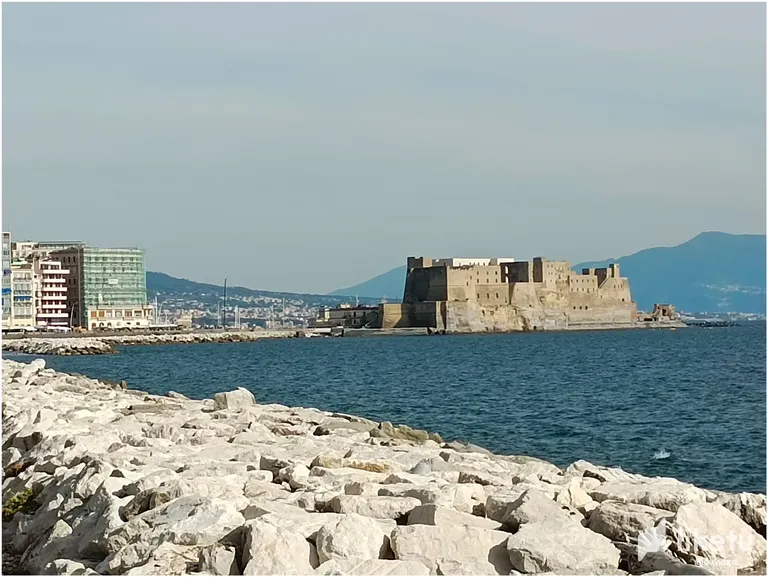
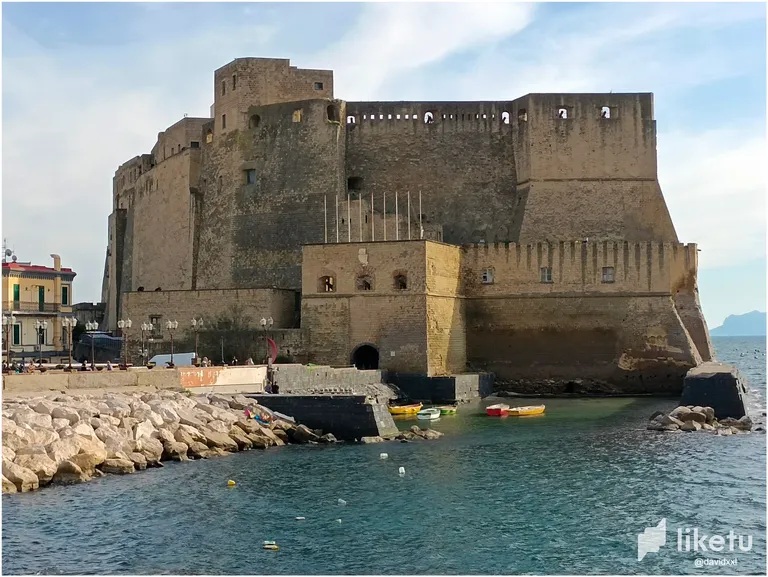

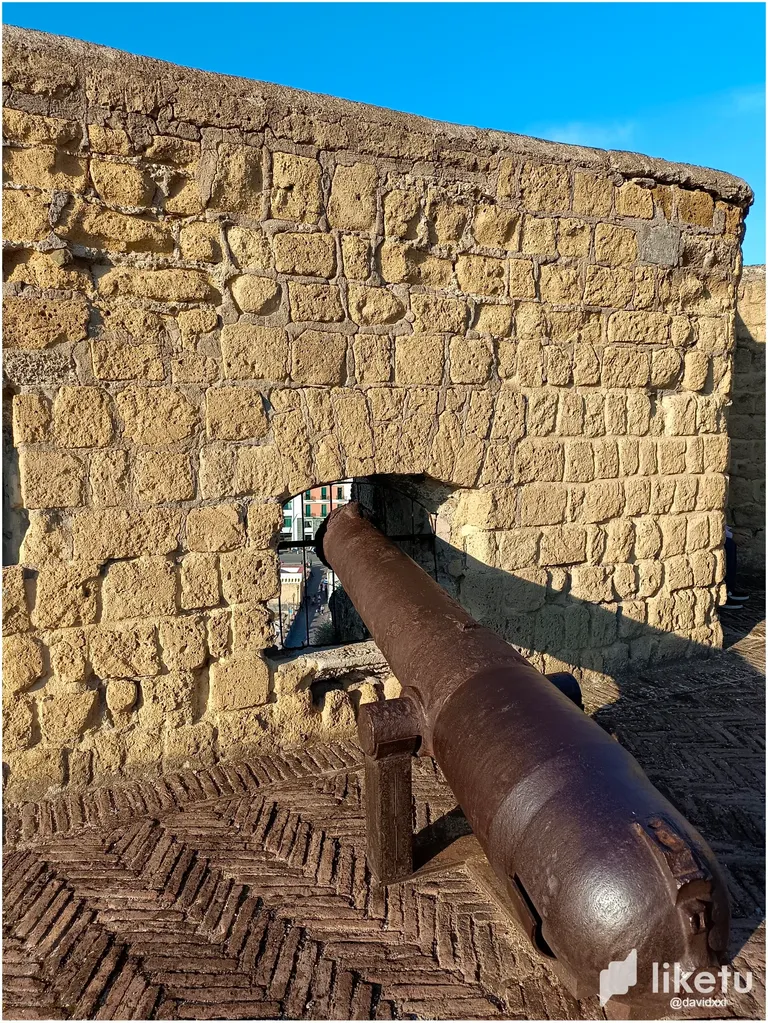
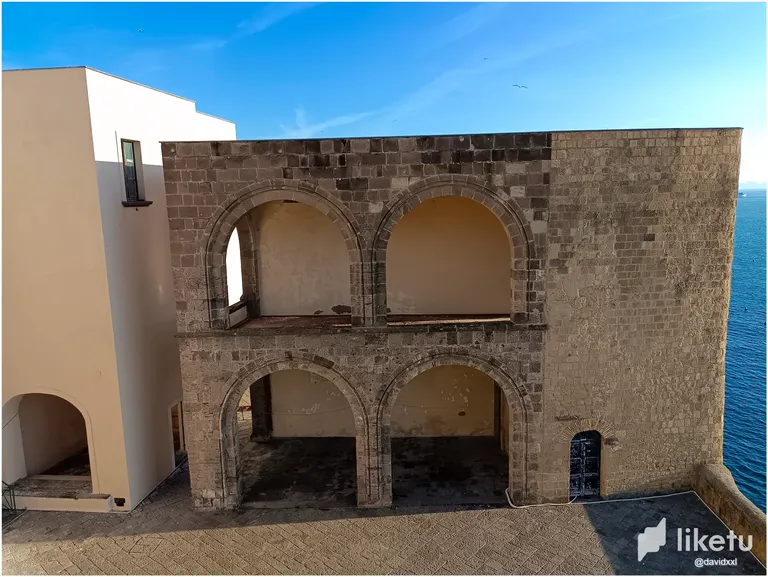
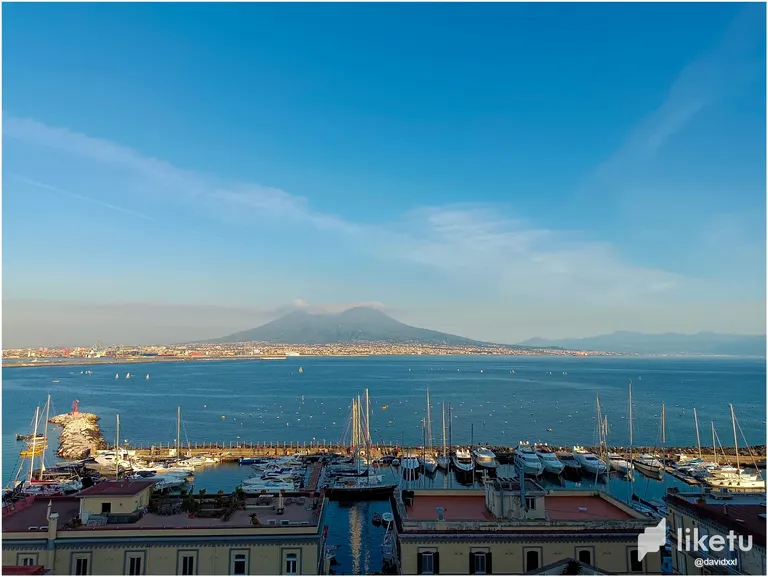
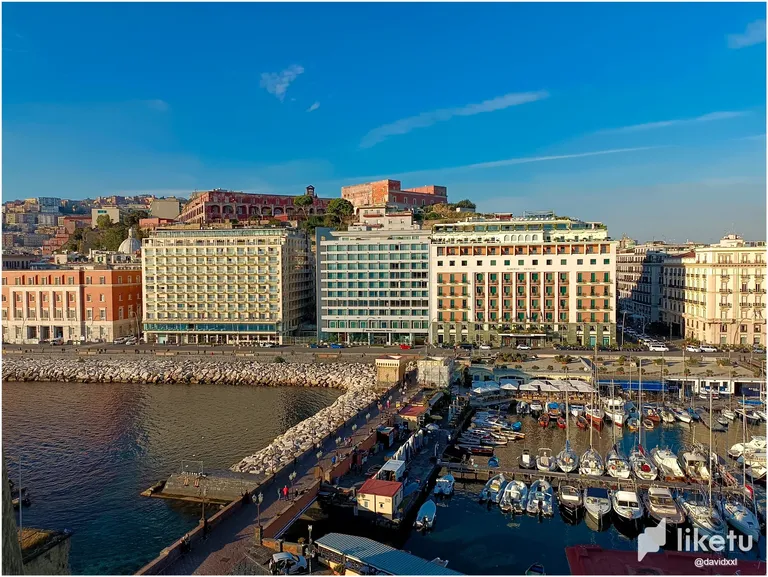
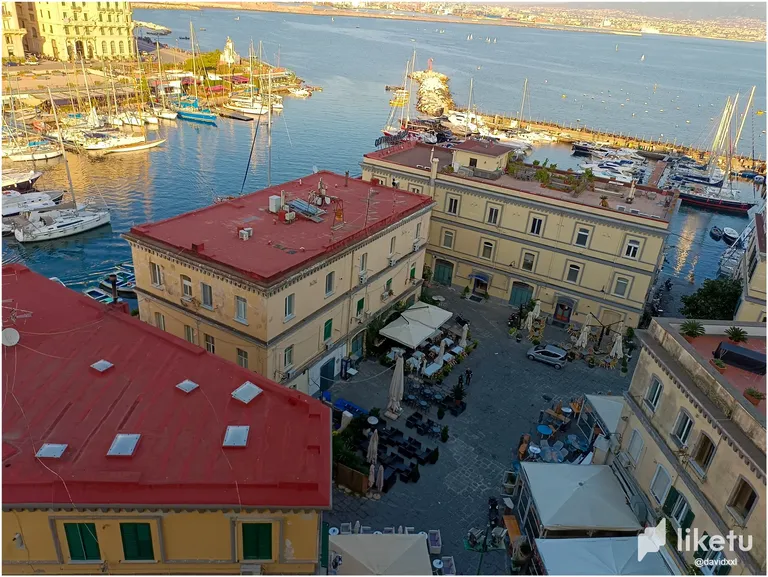
Borgo marinari
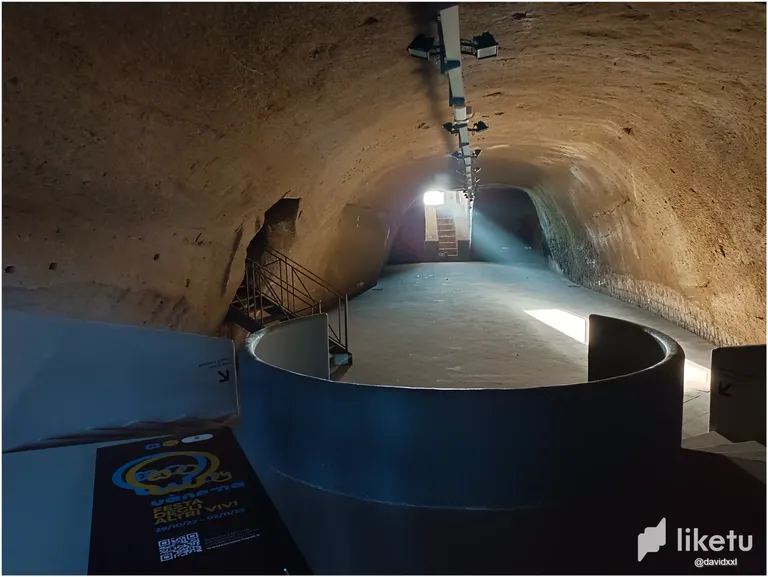
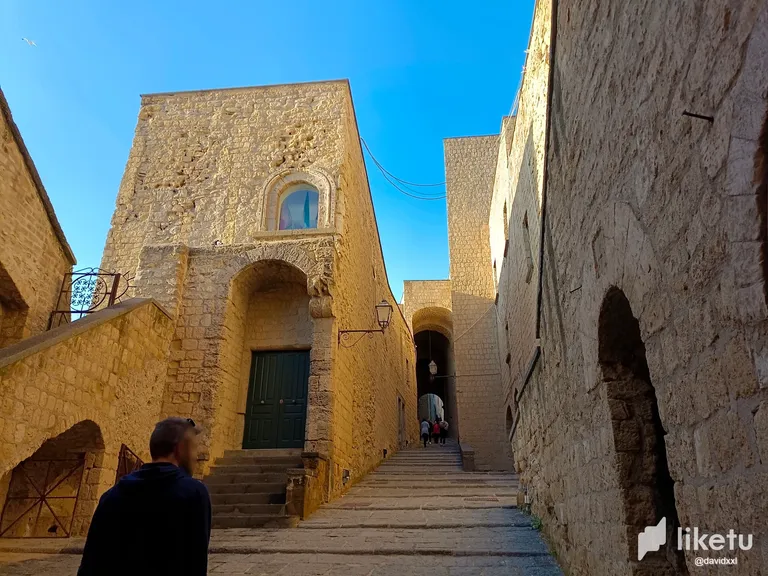
[Eng --> Ita]
On the island of Megaris in the 8th century A.C. the city of Parthenope was built by the Greek colony of the Cumans.
The yellow tuff islet was joined to the coast by a narrow strip of land where a footbridge was built to facilitate the trade of the inhabitants.
During the Roman era it had its development after the acquisition by Lucius Licinius Lucullus a skilled and loyal military and austere politician.
Lucius built on the island a wonderful villa with a forest of peaches and moray eels.
The fortification of the villa took place in various stages and the first to build the walls and militarize the island was one of the last emperors of Rome Valentinian III. In just 50 years the castle was transformed into a prison where the last Roman emperor Romulus Augustus was exiled. In the centuries to come it became a Benedictine monastery that ended up in the hands of the Saracens in the ninth century and used it to invade the city.
It was then that the building was razed and only after three centuries the Normans made it a castle with the work of the architect "Good" and built the Norman tower.
The expansion of the castle continued with the formidable King Frederick II of Swabia who made it a residence again and built three other towers: the Torre di Mezzo, Coleville and the Torre Maestra. Finally a state prison was built.
This purpose was a bitter fate for the Swabians because, after the Angevin conquest of the kingdom of Naples, the king Corradino of Swabia was imprisoned and finally beheaded in the square of the Market of Naples.
During the Angevin period the Ovo castle, so called by the Normans for the circular shape of the sea egg, A legend was born that wanted the vate Virgilio had so called the castle because he had put an egg with magical properties under the lintel of the structure making it miraculously indestructible.
This legendary reputation of invincibility was strengthened by the thesis that if the egg of the castle had been destroyed huge misfortunes had happened to the city of Naples.
This legend backfired against the French rulers because the castle was anything but indestructible and the lintel that held the castle was irreparably damaged by a massive earthquake during the reign of Joan I, sending the population into panic. It was also destroyed by the Aragonese, the Spanish dynasty that succeeded the French on the throne of Naples.
During the epoch of the Aragonese the kingdom of Naples became the scene of furious battles between the Spanish and the French who resisted the attempts of conquest by the French. Finally the Aragonese rebuilt the castle in its current appearance and splendour.
Under the Spanish dynasty of the Bourbons who alternated with the Aragonese, the castle began to lose its residential function and was strengthened as a military outpost, becoming an instrument for the maintenance of power and to suppress the numerous revolts that humble but proud and rebellious Neapolitan population during their reign.
During the unification of Italy the island returned to its residential function and was housed some military officials and finally was transformed into a free museum and accessible to the public for most of the day.
The castle is flanked by a beautiful village with characteristic houses whose bases there are many high class restaurants and fine cuisine. There is no shortage of elegant bars for the youth well of the city of Naples.
On the sides of the village there is a charming marina with a lighthouse and a shipyard behind.
On the roof of the castle you can admire the enchanting panorama of Naples and there are still some big cannons of the Spanish era.
[Versione in italiano]
Sull'isola di Megaride nell'VIII secolo A.C. fu costruita la città di Parthenope dalla colonia greca dei cumani.
L'isolotto in tufo giallo era unito alla costa da uno stretto lembo di terra dove fu costruita una passerella per agevolarne il commercio degli abitanti.
Durante l'epoca romana ha avuto il suo sviluppo dopo l'acquisizione da parte di Lucio Licinio Lucullo un abile e leale militare ed austero politico.
Lucio costruì sull'isola una meravigliosa villa con un bosco di peschi e allevamento di murene.
L'opera di fortificazione della villa avvenne in vari stadi e il primo a costruire le mura e a militarizzare l'isola fu uno degli ultimi imperatori di Roma Valentiniano III. In appena 50 anni il castello venne trasformato in prigione esiliandovi l'ultimo imperatore romano Romolo Augusto. Nei secoli a venire divenne un monastero benedettino che finì in mano ai saraceni nel IX secolo e lo usarono per invadere la città.
Fu allora che l'edificio venne raso al suolo e solo dopo tre secolo i normanni ne fecero un castello con l'opera dell'architetto "Buono" e vi costruirono la torre normanna.
L'espansione del castello prosegui con il formidabile re Federico II di Svevia che lo fecero tornare ad essere una residenza e costruendovi altre tre torri ovvero la torre di Mezzo, di Coleville e la torre Maestra. Infine venne edificata una prigione di stato.
Questo scopo costituì un'amara sorte per gli svevi in quanto, dopo la conquista angioina del regno di Napoli, ne venne imprigionato il re Corradino di Svevia e infine decapitato nella piazza del Mercato di Napoli.
Durante il periodo angioino il castel dell'Ovo, chiamato così dai normanni per la forma circolare a forma di uovo del mare, nacque una leggenda che voleva che il vate Virgilio avesse chiamato così il castello perchè aveva messo un uovo dalle proprietà magiche sotto l'architrave della struttura rendendolo miracolosamente indistruttibile.
Questa leggendaria fama di invincibilità era fortificata dalla tesi che se l'uovo del castello fosse stato distrutto enormi sventure fossero capitate alla città di Napoli.
Questa leggenda si ritorse contro ai regnanti francesi in quanto il castello era tutt'altro che indistruttibile e l'architrave che reggeva il castello venne irrimediabilmente danneggiata da un fortissimo terremoto durante il regno di Giovanna I mandando in panico la popolazione. Inoltre venne distrutto anche dagli aragonesi, la dinastia spagnola che si avvicendò a quella francese sul trono di Napoli.
Durante l'epopea degli aragonesi il regno di Napoli divenne teatro di furenti battaglie tra gli spagnoli e i francesi che resistettero ai tentativi di conquista da parte dei transalpini. Infine gli aragonesi ricostruirono il castello nell'aspetto e nei fasti attuali.
Sotto la dinastia spagnola dei Borbone che si avvicendò a quella aragonese il castello cominciò a perdere la funzione residenziale e venne potenziato come avamposto militare diventando strumento per il mantenimento del potere e per soffocare le numerose rivolte che subirono dalla umile ma fiera e ribelle popolazione napoletana durante il loro regno.
Durante l'unità d'Italia l'isolotto ritornò nella sua funzione residenziale e vennero ospitati alcuni funzionari della marina militare ed infine venne trasformato in un museo gratuito ed accessibile al pubblico per gran parte del giorno.
Il castello è fiancheggiato da un bellissimo borgo dalle caratteristiche case alle cui basi sorgono numerosi ristoranti di alta classe e dalla cucina pregiata. Non mancano eleganti bar per la gioventù bene della città di Napoli.
Ai lati del borgo c'è un'incantevole porto turistico con un faro e un cantiere navale alle spalle.
Sul tetto del castello è possibile ammirare degli incantevoli panorama di Napoli e vi sono presenti ancora dei grossi cannoni d'epoca spagnola.
For the best experience view this post on Liketu
Congratulations, your post has been added to Pinmapple! 🎉🥳🍍
Did you know you have your own profile map?
And every post has their own map too!
Want to have your post on the map too?
https://twitter.com/1334785203466801153/status/1590222371654635520
The rewards earned on this comment will go directly to the people( @davidxxl ) sharing the post on Twitter as long as they are registered with @poshtoken. Sign up at https://hiveposh.com.
Hi @davidxxl,
Great to see you using the #travelfeed tag! We launched the #travelfeed curated tag more than 3 years ago and have been supporting the best travel blogs on Hive ever since. But did you know that TravelFeed has evolved? Based on the feedback of thousands of Hive travel bloggers we created TravelFeed.io.
TravelFeed.io brings together all the benefits of Hive decentralized blogging with features that you as a travel blogger will love: Photo galleries, Instagram embeds, custom maps, post scheduling, automated adding to Pinmapple and more. And if you want, you can even use our easy site builder to set up your own travel blog on your own domain which can be a great way to generate a passive income from your blog!
Unfortunately, focussing on developing the best platform for travelers means that we no longer curate the #travelfeed tag. But, you can log in with your Hive account on TravelFeed.io to publish your next travel post, and it will be posted to Hive automatically! Every day, we select the best posts and reward them with an upvote and added visibility.
We would love to see you on TravelFeed.io soon :)
Thank you for burning ALIVE tokens and supporting the We Are Alive Tribe, you have earned 7 tickets for our weekly ALIVE Burning Contest.
!ALIVE
!LOLZ
Made in Canva
@davidxxl! You Are Alive so I just staked 0.1 $ALIVE to your account on behalf of @aliveprojects. (2/30)
The tip has been paid for by the We Are Alive Tribe through the earnings on @alive.chat, feel free to swing by our daily chat any time you want.

lolztoken.com
I don’t know and I don’t care.
Credit: reddit
@davidxxl, I sent you an $LOLZ on behalf of @aliveprojects
Are You Ready for some $FUN? Learn about LOLZ's new FUN tribe!
(2/10)